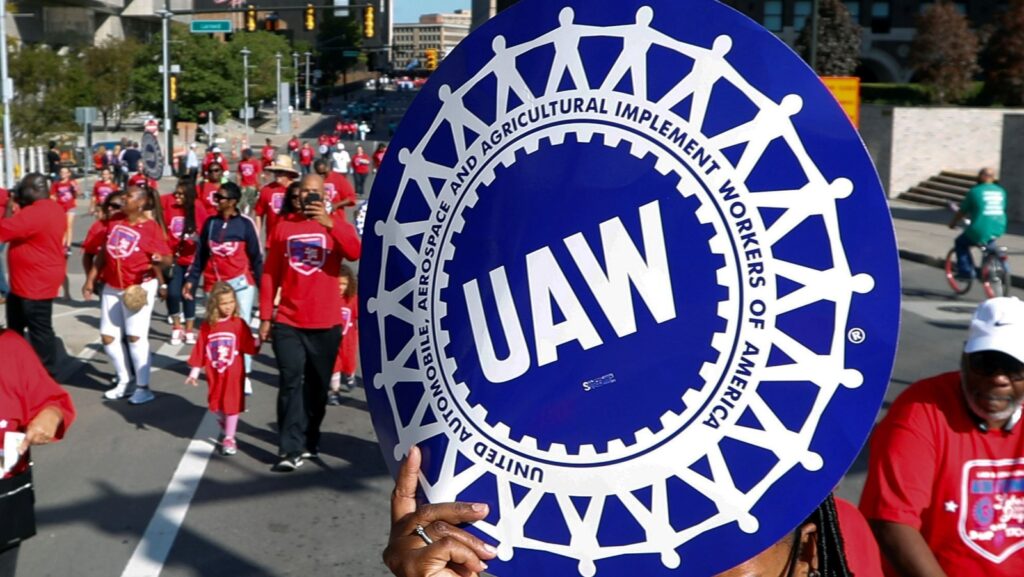From barbecues to getaways to shopping sales, many people across the country are finding relaxing ways to celebrate Labor Day, the federal holiday celebrating American workers.
This year marks the 130th anniversary of the holiday, which is celebrated on the first Monday in September. While recent union advocacy efforts have evoked the holiday’s activist roots, the three-day weekend it brings has become a touchstone in American life, marking the unofficial end of summer.
Here’s what you need to know about Labor Day.
Its origins date back to the late 19th century, when activists tried to establish a day to honor workers.
The first Labor Day celebration in the United States took place in New York City on September 5, 1882, when about 10,000 workers participated in a parade organized by the Central Labor Union and the Knights of Labor.
Todd Bashon, an assistant professor at Rutgers University’s School of Management and Labor Relations, said that while factory owners’ quality of life has “skyrocketed,” workers’ quality of life has declined as they move from craftsman jobs to factory jobs.
Over the next few years, several cities and states began enacting laws recognizing Labor Day, and President Grover Cleveland signed a bill from Congress in 1894 making Labor Day a federal holiday.
That was the same year that workers at the Pullman Palace Car Company went on strike after the company cut wages without lowering the rents they lived in in company-owned towns near Chicago, Mr. Bashon said. More than a dozen workers were killed after the city of Cleveland sent in federal troops to put down the strike, he said.
Cleveland’s move to establish Labor Day as a federal holiday was later seen by some historians as a way for him to “make peace” with the working class, Bashon said.
The three-day Labor Day weekend sees travelers flock to airports and highways for end-of-summer getaways and backyard chefs prepare barbecues for family and friends.
Barbecue has been a part of Labor Day celebrations from the beginning, says Robert F. Moss, a food writer, culinary historian and author of “Barbecue: An American Cultural History.”
The custom was already deeply rooted in the United States, he said, and with the rise of the labor movement in the late 19th century, it was natural for people to gather in large numbers to celebrate. In the 20th century, the holiday evolved into a backyard barbecue gathering of friends and family.
“There’s still that same sense of community that there was back in the day, gathering around the grill and eating together,” he said.
Vachon said whether or not you keep the labor movement’s origins in mind during celebrations depends on whether you live in a place with a large labor union presence.
Chicago holds a parade and festival over Labor Day weekend in the Pullman neighborhood, the birthplace of the holiday. Chicago Federation of Labor President Bob Reiter said the parade and festival, organized by his organization, brings together union members and their families from throughout the area.
When Labor Day became a federal holiday in 1894, labor unions in the U.S. were widely contested, with courts often ruling strikes illegal, leading to violent conflicts, Bashon said. Private sector employees did not have the right to join labor unions until the National Labor Relations Act of 1935.
In the second half of the 20th century, state governments also began to enact laws allowing public sector workers to form unions. However, even today, not all states allow public employees to bargain collectively.
Vachon said there has been a resurgence in union organizing, activity, interest and support in recent years.
“Many millennials and Gen Zers are entering the workforce at a time not unlike the 1880s, when there was a lot of labor unrest,” Bashon said. “Jobs just aren’t paying enough to achieve the American Dream.”
The adage that you shouldn’t wear white after Labor Day is a “rule” that has been broken and is now very fashionable, but where did it originate?
Fashion experts say the custom likely dates back to the Gilded Age of the late 1800s, when Labor Day was born, when well-to-do New Yorkers wore cool white dresses while summering in places like Newport, Rhode Island, and put them away when they returned to the dusty streets of New York at the end of summer.
Christy Kratzinger, a professor of merchandising and digital retail at the University of North Texas, has heard this adage from women in her family for generations, but “the fashion industry doesn’t work that way anymore,” she added.
“People think that and say that, but they don’t follow through,” she said.
Daniel James Cole, adjunct assistant professor of fashion history at the Fashion Institute of Technology and co-author of “The History of Modern Fashion,” said fashion is on many people’s minds around Labor Day because of back-to-school shopping and the move by many businessmen to change from relaxed summer dress codes.
The holiday is “kind of a watershed moment between summer dressing and fun and getting back to more serious activities,” he said.
Copyright © 2024 The Associated Press. All rights reserved.



